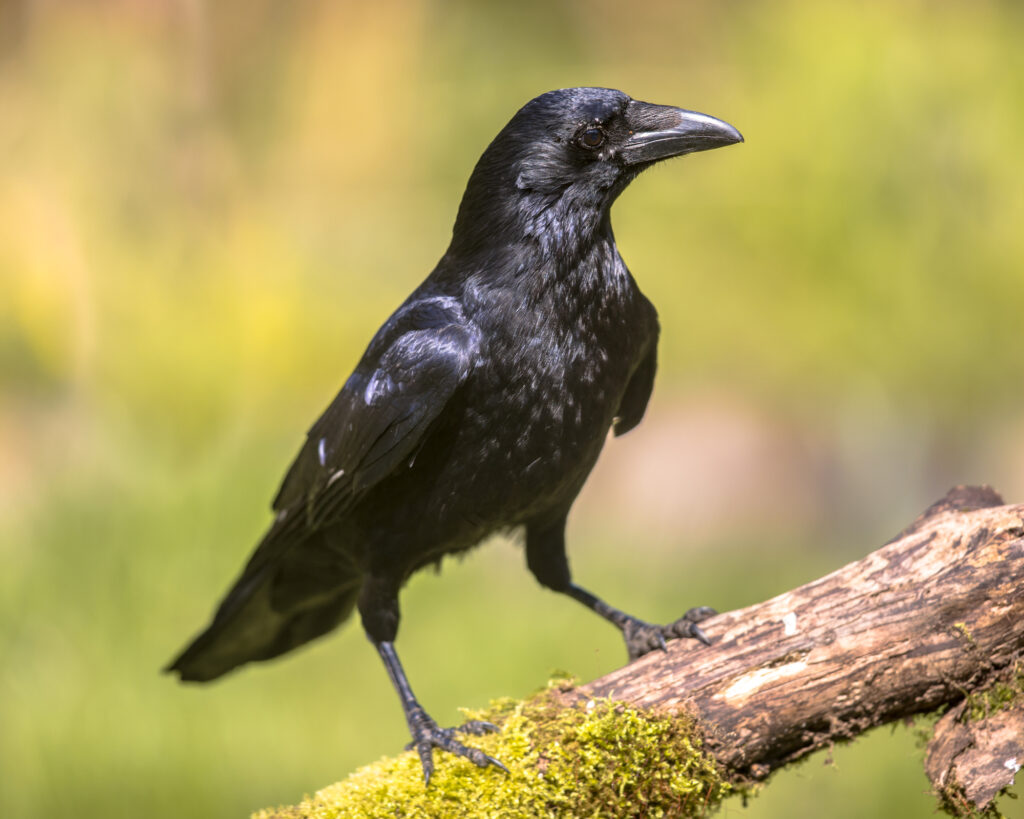When we talk about black birds (as two words) this is different from when we talk about blackbirds (one word). Even birdwatchers can mix these two categories up sometimes, so don’t feel bad.
The former refers to any bird that is black in hue, while the latter refers to a specific genus of birds. If you see a black bird, it might be a blackbird. But it might belong to an entirely different genus or group of birds.
Blackbirds (one word) are related to one another, and might not even be black. While black birds (two words) can bear no relation to one another whatsoever and have only the hue of their plumage in common.
We love the little details that separate one bird from another, so we’re happy to help you learn the differences between common blackbirds and black birds below.
Key Takeaways
- Although the single word “blackbird” refers to specific bird families, the two words “black birds” encompass any bird species with black plumage.
- There are numerous black bird species across North America, including the well-known Red-winged Blackbird and the very intelligent American Crow, showcasing the diversity of black-plumaged birds.
- Black birds carry a wealth of cultural and symbolic meanings across the world, reflecting their significance in various mythologies.
Black Birds vs Blackbirds
If you catch a fleeting glimpse of a black bird in your garden or when out birdwatching in your area, this might be a blackbird – or not. When working to improve your skills in bird identification, you must understand the difference between blackbirds and birds that are black.
What Are Blackbirds?
When we talk about blackbirds in North America, we’re talking about New World Blackbirds, a group of passerine birds in the Icteridae bird family.
In Europe, North Africa, and Asia, the word blackbird is usually used to refer to the species turdus merula, also called the common blackbird or Eurasian blackbird. This species is in the thrush family and is not at all closely related to the New World Blackbirds mentioned above.
How Many Different Blackbirds Are There?
There are one hundred and three New World Blackbird species. Of these, twenty-five are spotted in North American habitats, with many of these common birds.
Many species are regularly spotted in at least some states, then often in many others.
What Blackbirds Can Be Seen in North America?
A few common species in North America are the great-tailed grackle and shiny cowbird.
Which Blackbirds Look Black?
Here are some of the Icterids that have predominantly black plumage:
Red-Winged Blackbirds
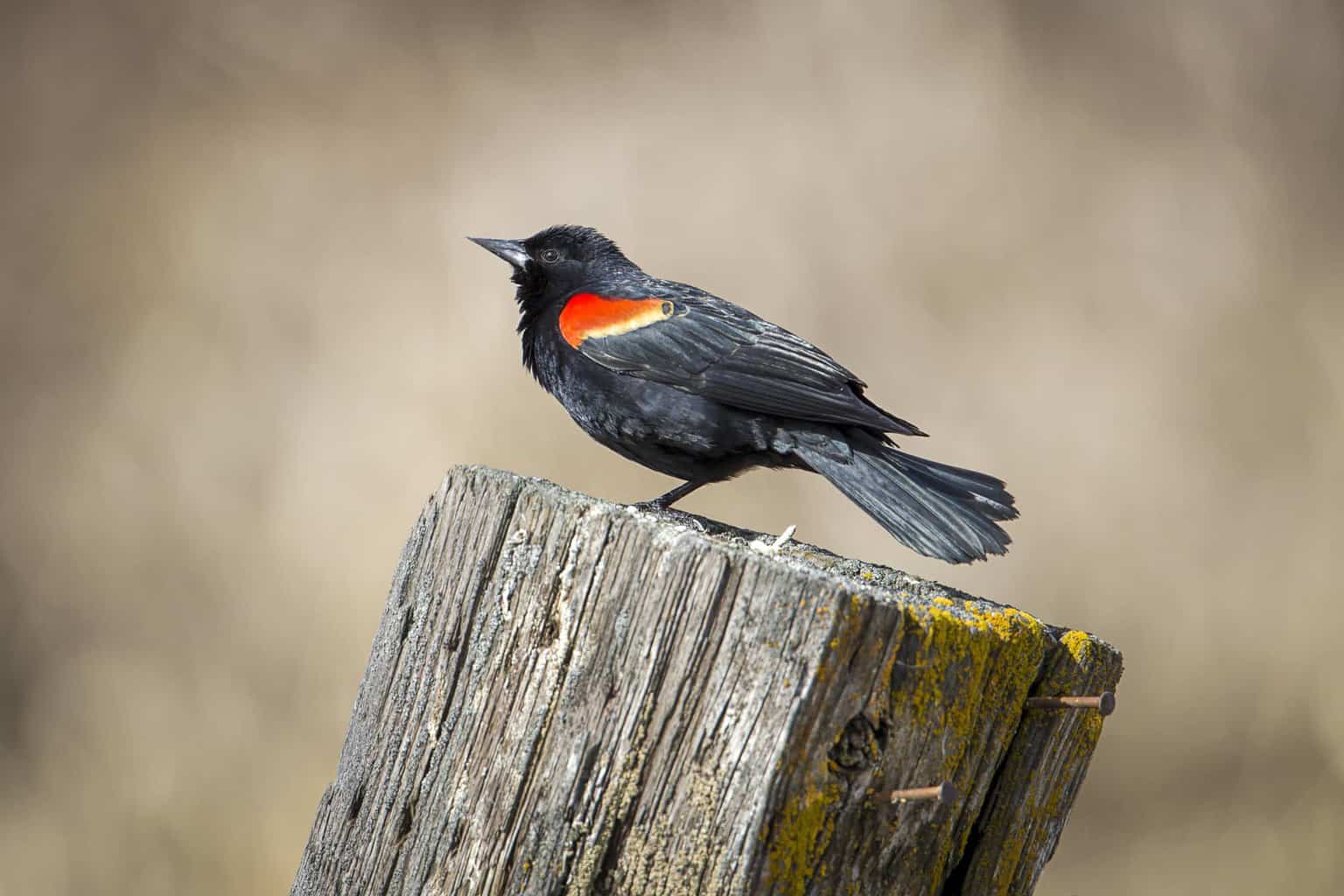
- Scientific Name: Agelaius phoeniceus
- Length: 6.7-9.1 in (17-23 cm)
- Weight: 1.1-2.7 oz (32-77 g)
- Wingspan: 12.2-15.8 in (31-40 cm)
If you see a black bird, there’s a high chance it’s the red-winged blackbird. The males have all-black coloring except for their reddish-orange wing patches.
Common Grackle

- Scientific Name: Quiscalus quiscula
- Length: 11.0-13.4 in (28-34 cm)
- Weight: 2.6-5.0 oz (74-142 g)
- Wingspan: 14.2-18.1 in (36-46 cm)
Another New World blackbird you may encounter is the common grackle. These birds are taller than typical blackbirds and have longer tails.
The males have a glossy plumage that is somewhat more iridescent than their female counterparts.
Great Tailed Grackle

- Scientific Name: Quiscalus mexicanus
- Length: 15.0-18.1 in (38-46 cm)
- Weight: 3.7-6.7 oz (105-190 g)
- Wingspan: 18.9-22.8 in (48-58 cm)
Male great-tailed grackles have long, tapered tails, iridescent black plumage, and yellow eyes. You can find these birds throughout North America.
Boat-Tailed Grackle
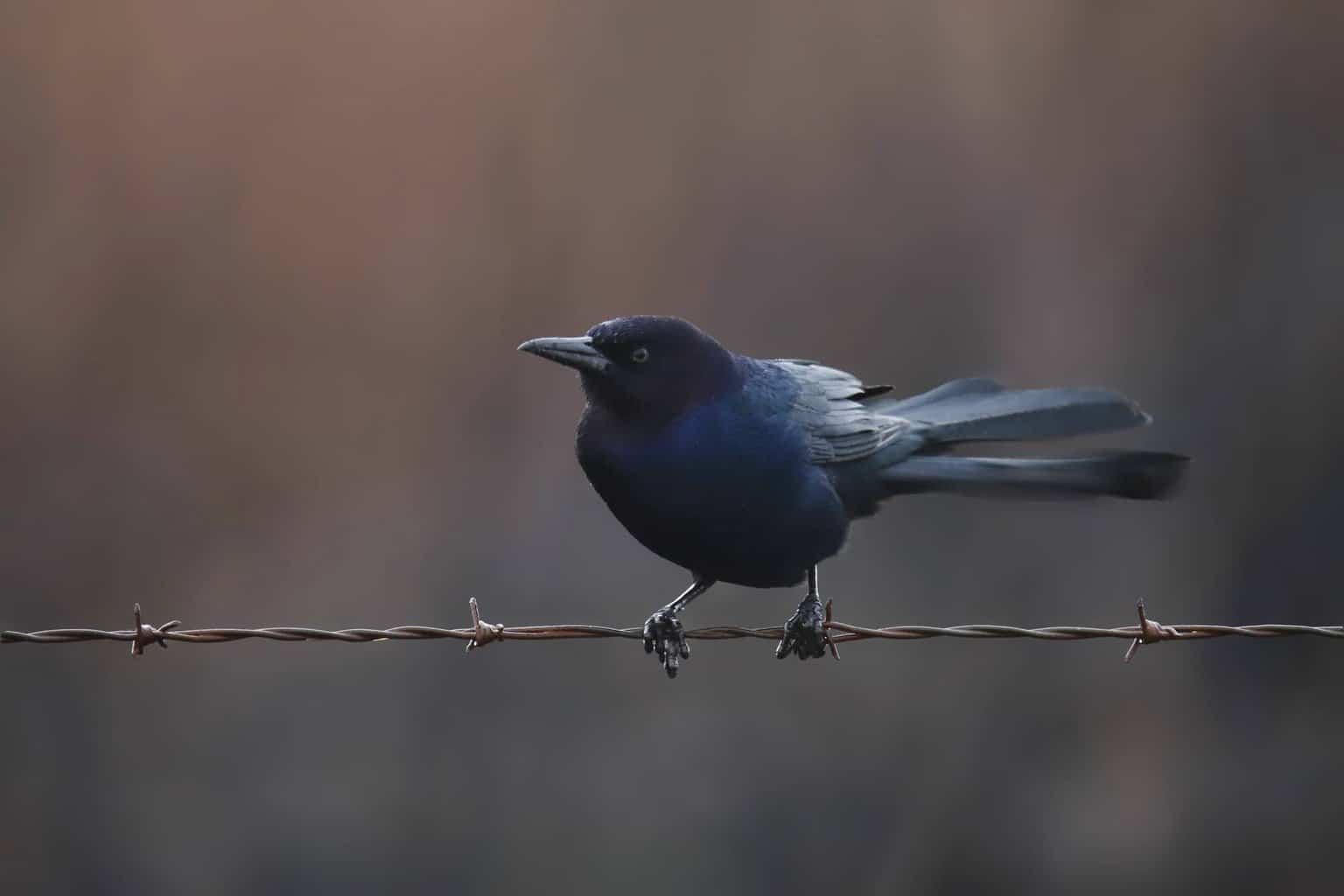
- Scientific Name: Quiscalus major
- Length: 10.2-14.6 in (26-37 cm)
- Weight: 3.3-8.4 oz (93-239 g)
- Wingspan: 15.3-19.7 in (39-50 cm)
The boat-tailed grackle has a sharp and swooping silhouette. The males are glossy and black with long tails and pointed bills.
Brown-Headed Cowbird
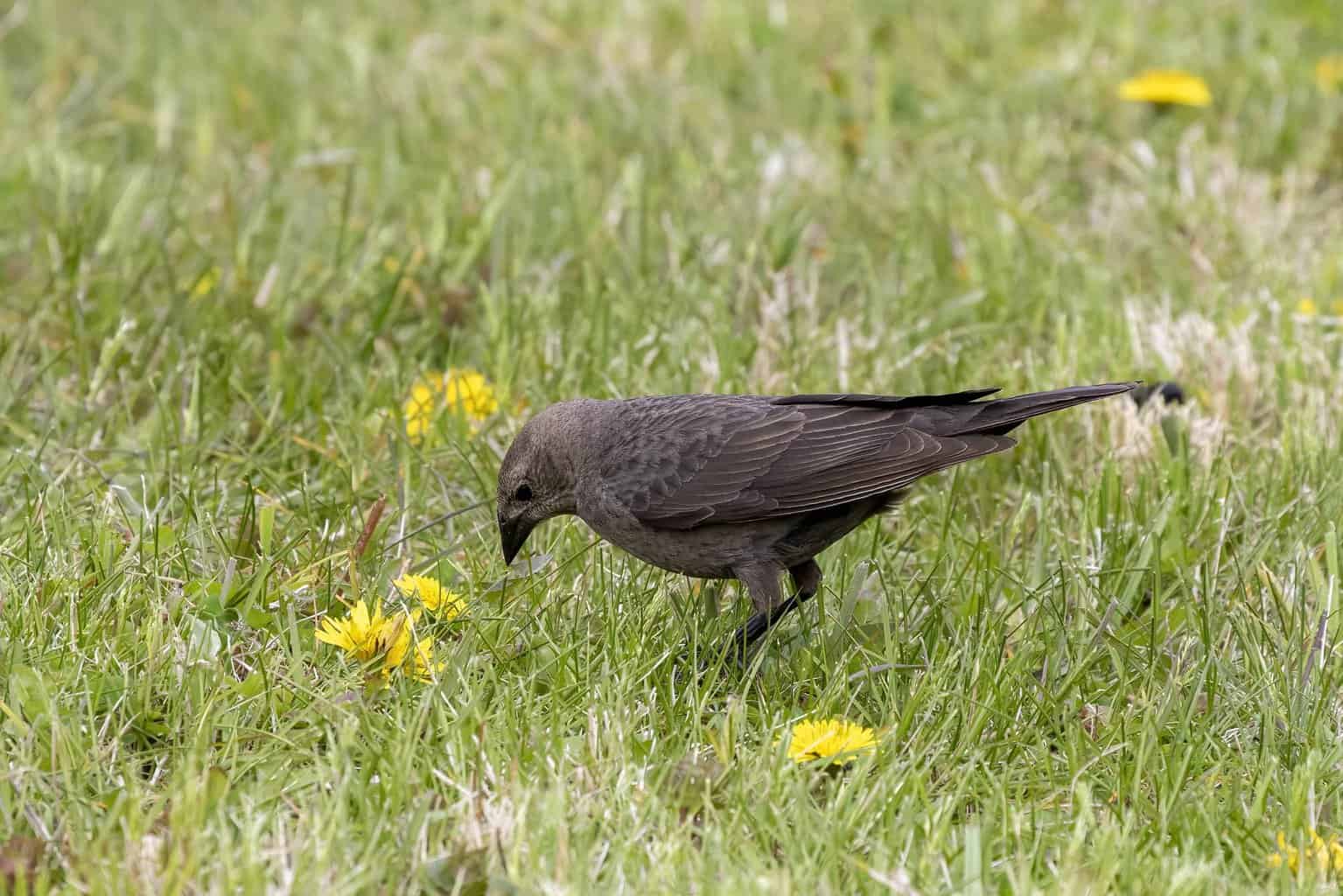
- Scientific Name: Molothrus ater
- Length: 76.3-8.7 in (19-22 cm)
- Weight: 1.3-1.8 oz (42-50 g)
- Wingspan: 14.2 in (36 cm)
Males of this species boast black bodies. They also have brown heads, which helps to distinguish them from other members of this family and other predominantly black birds.
Bronzed Cowbird
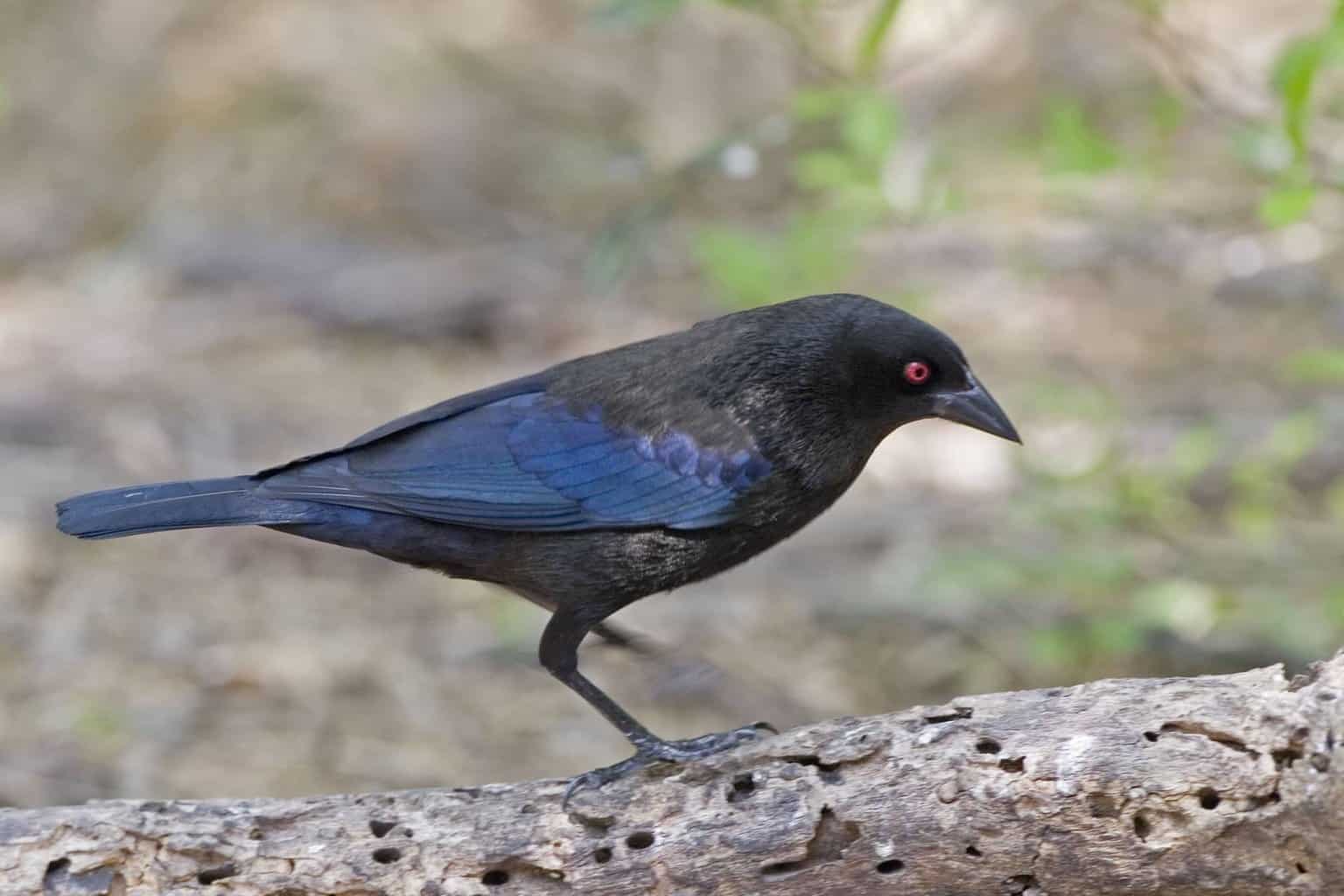
- Scientific Name: Molothrus aeneus
- Length: 7.9 in (20 cm)
- Weight: 2.3-2.6 oz (64.9-73.9 g)
- Wingspan: 13.0 in (33 cm)
The males of this species are black with a glossy dark blue sheen to their wings. Their most distinctive features are their bright red eyes.
Shiny Cowbird

- Scientific Name: Molothrus aeneus
- Length: 7.9 in (20 cm)
- Weight: 2.3-2.6 oz (64.9-73.9 g)
- Wingspan: 13.0 in (33 cm)
With glossy deep purple-black plumage, this striking cowbird species can be spotted in southern Florida and occasionally elsewhere in southern U.S. habitats.
Rusty Blackbird

- Scientific Name: Euphagus carolinus
- Length: 8.3-9.8 in (21-25 cm)
- Weight: 1.7-2.8 oz (47-80 g)
- Wingspan: 14.6 in (37 cm)
Male rusty blackbirds have glossy black plumage in summer when breeding. However, non-breeding males take on a rusty brown color at other times of the year.
Brewer’s Blackbird
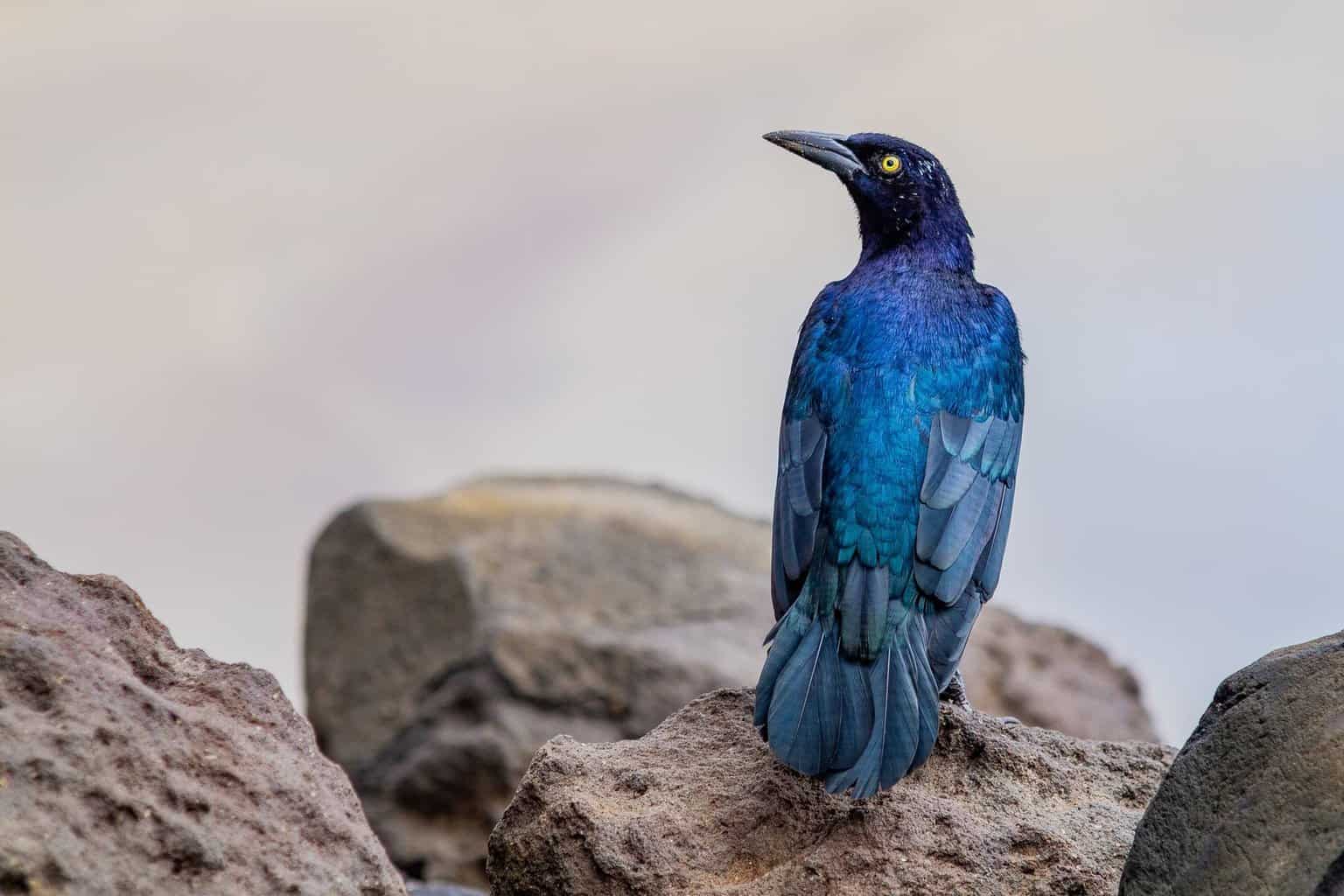
- Scientific Name: Euphagus cyanocephalus
- Length: 7.9 -9.8 in (20-25 cm)
- Weight: 1.8 -3.0 oz (50-86 g)
- Wingspan: 14.6 in (37 cm)
Brewer’s blackbird males are another predominantly black bird. The males of this species are black with purplish and green iridescence visible on the head and body.
Yellow-Headed Blackbird
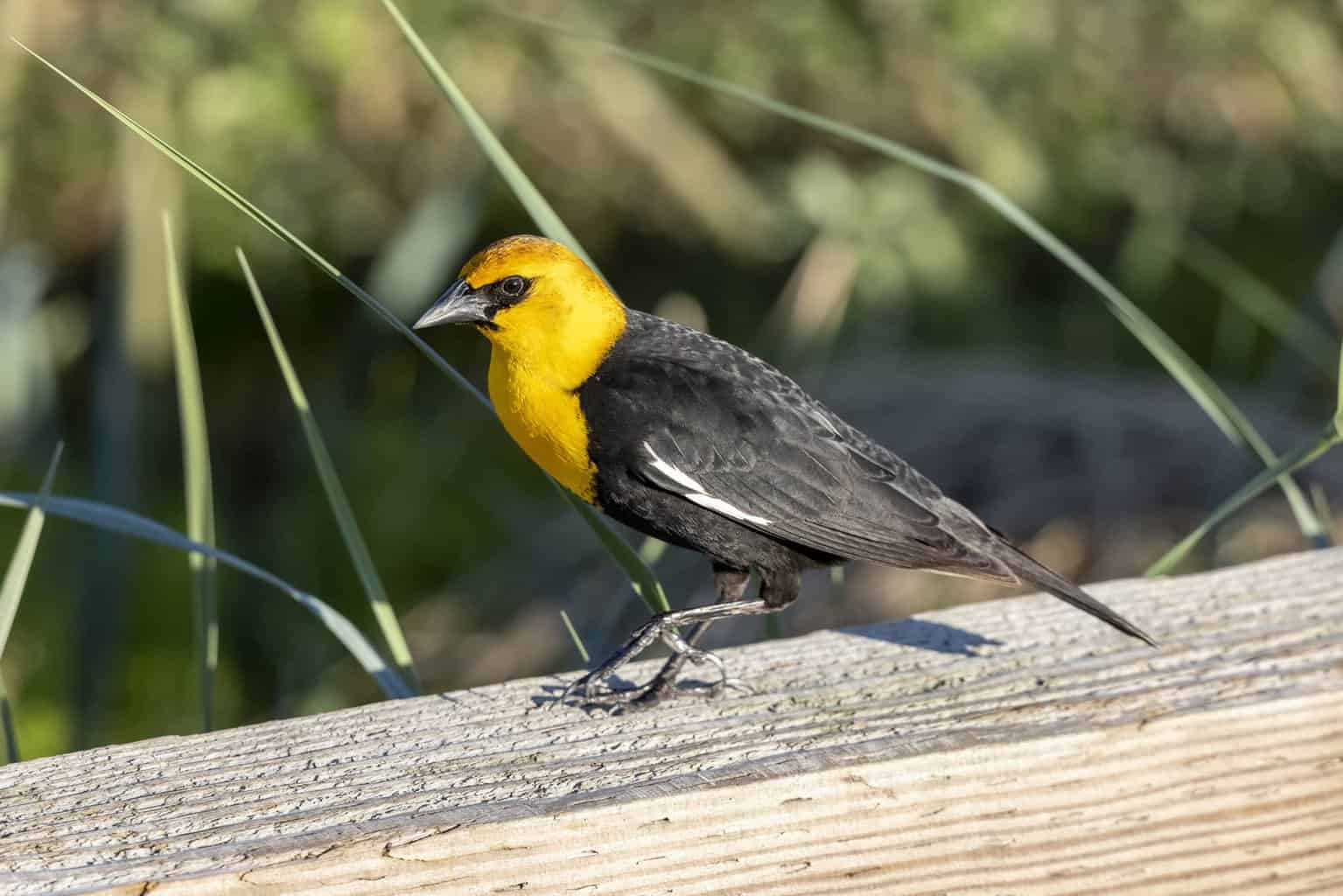
- Scientific Name: Xanthocephalus xanthocephalus
- Length: 8.3-10.2 in (21-26 cm)
- Weight: 1.6-3.5 oz (44-100 g)
- Wingspan: 16.5-17.3 in (42-44 cm)
Yellow-headed blackbird males live up to their name. They have yellow heads and chests with white wing patches, though the rest of their body is black.
Though the yellow color gives the game away most of the time, you might catch a fleeting glimpse and think this is a black bird.
Bobolink

- Scientific Name: Dolichonyx oryzivorus
- Length: 5.9-8.3 in (15-21 cm)
- Weight: 1.0-2.0 oz (29-56 g)
- Wingspan: 10.6 in (27 cm)
Bobolinks aren’t black outside of the breeding period. During the breeding period, males take on their breeding plumage, which is mostly black with white on their backs and wings.
Their striking yellow ‘hair’ makes them easily identifiable.
What Other Black Birds Are There?
Of course, there are a great many other stunning birds with predominantly black feathers that do not belong to the group known as the New World blackbirds.
For example, common species of birds seen in North America include:
European Starling
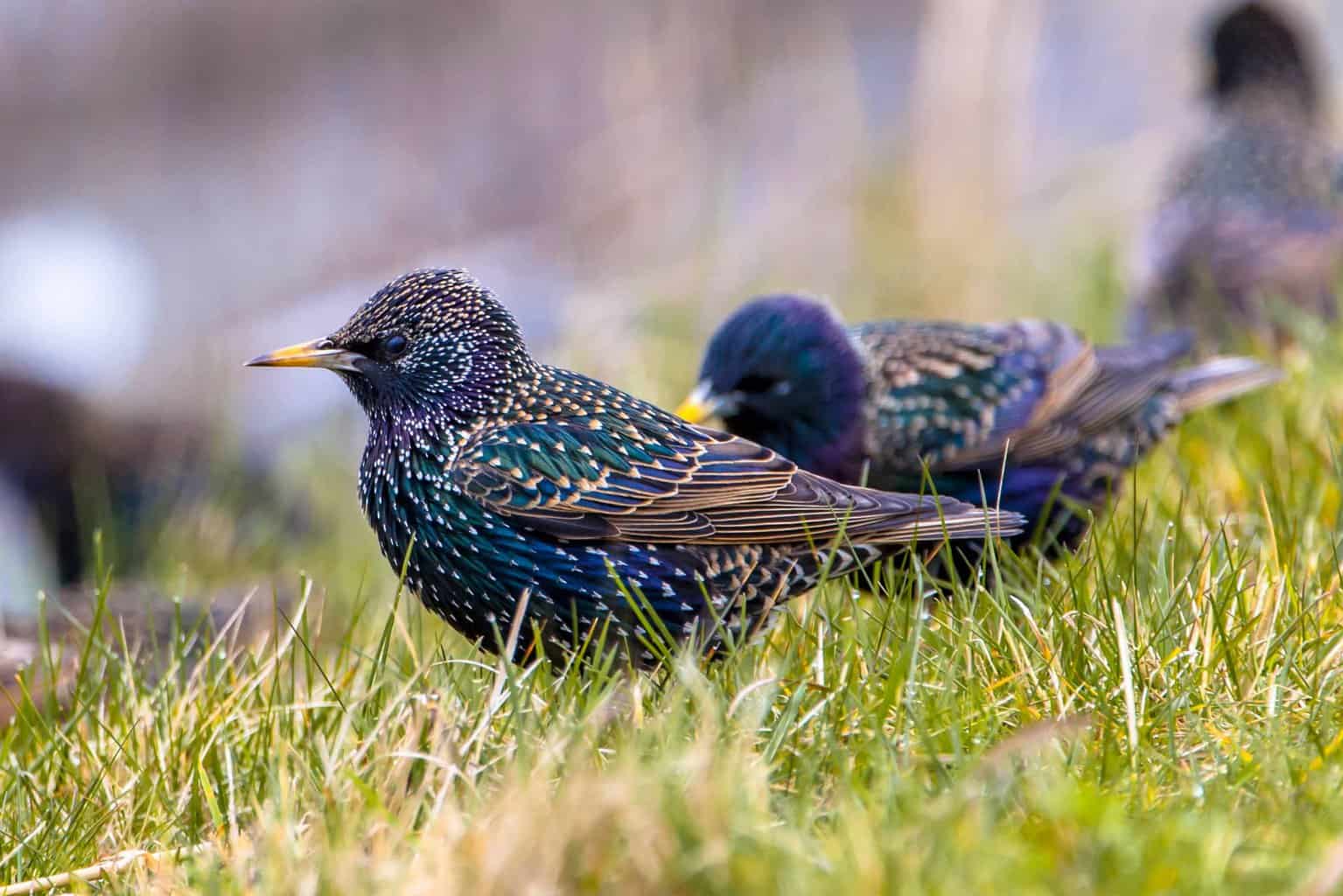
- Scientific Name: Sturnus vulgaris
- Length: 7.9-9.1 in (20-23 cm)
- Weight: 2.1-3.4 oz (60-96 g)
- Wingspan: 12.2-15.8 in (31-40 cm)
This non-native Eurasian species is now widespread across North America. Though they look black from a distance, they are very colorful with purple, blue, and green iridescent feathers.
They are often found alongside groups of New World blackbirds mentioned above.
The Crow Family: Corvids
Another important group of black-plumaged birds is the family Corvidae. These are highly intelligent, oscine passerine birds, and 133 species are currently identified. Some species in this family found in North America include:
American Crows
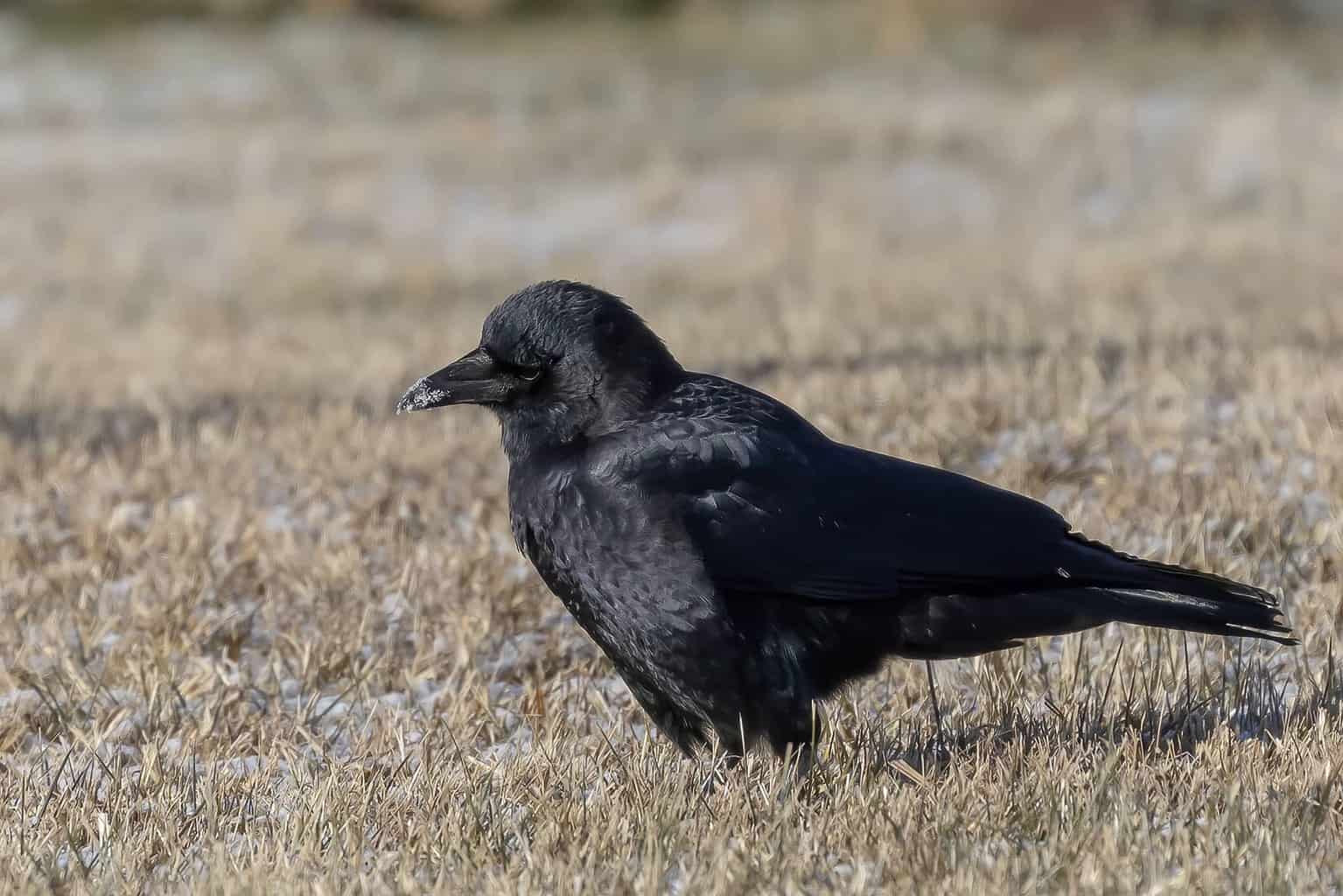
- Scientific Name: Corvus brachyrhynchos
- Length: 16-21 in
- Weight: 11-21 oz
- Wingspan: 33-39 in
Another extremely common black bird found in North America is the American crow. You can find these birds hanging out just about anywhere and calling from trees — fields, backyards, or in dense cities.
Fish Crows
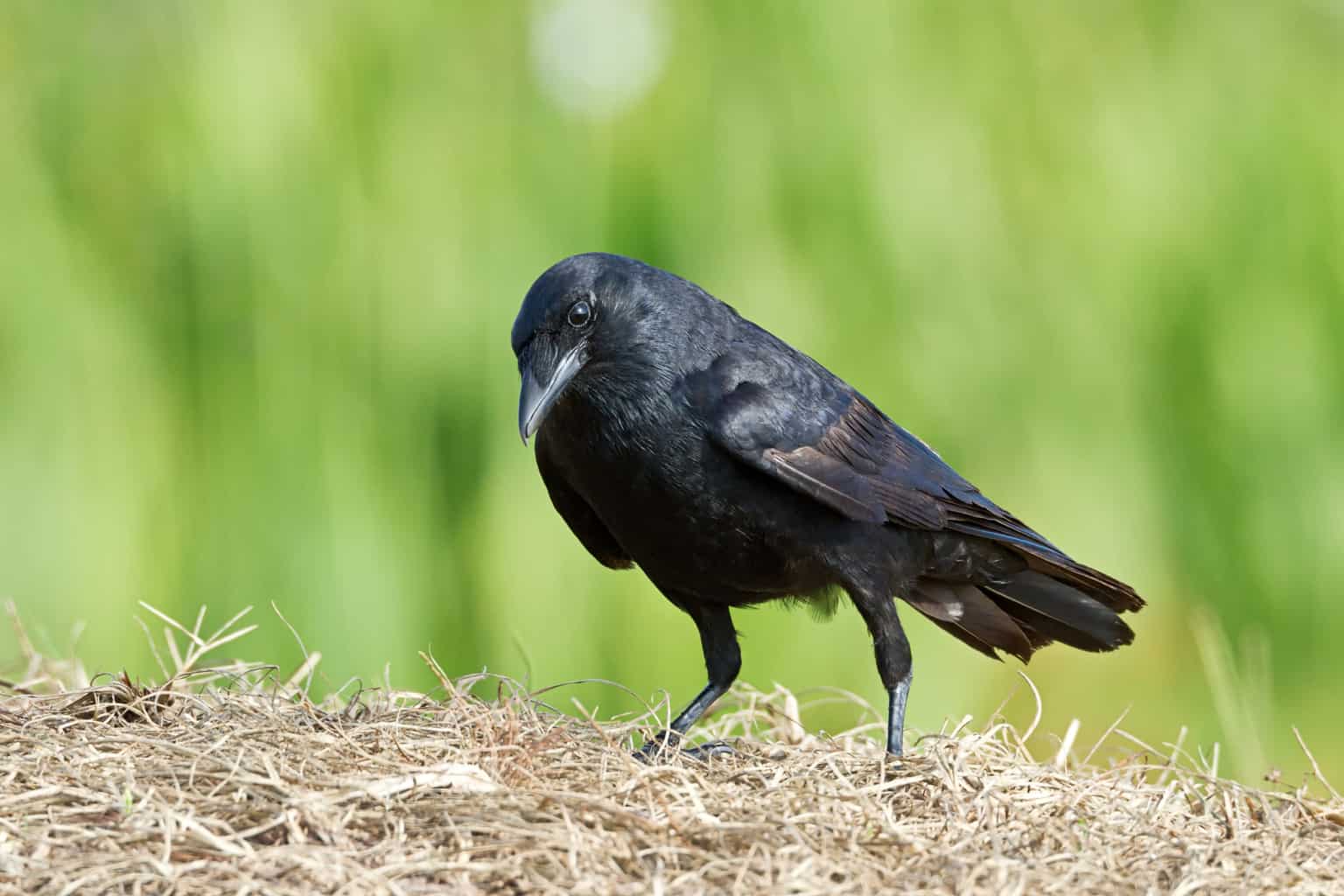
- Scientific Name: Corvus ossifragus
- Length: 10.4–11.5 in
- Weight: 9.9–11.3 oz
- Wingspan: 14–16 in
Fish crows look the same as American crows and are commonly distinguished from the above only by their calls. These black birds are found along the east coast of the US.
Common Ravens
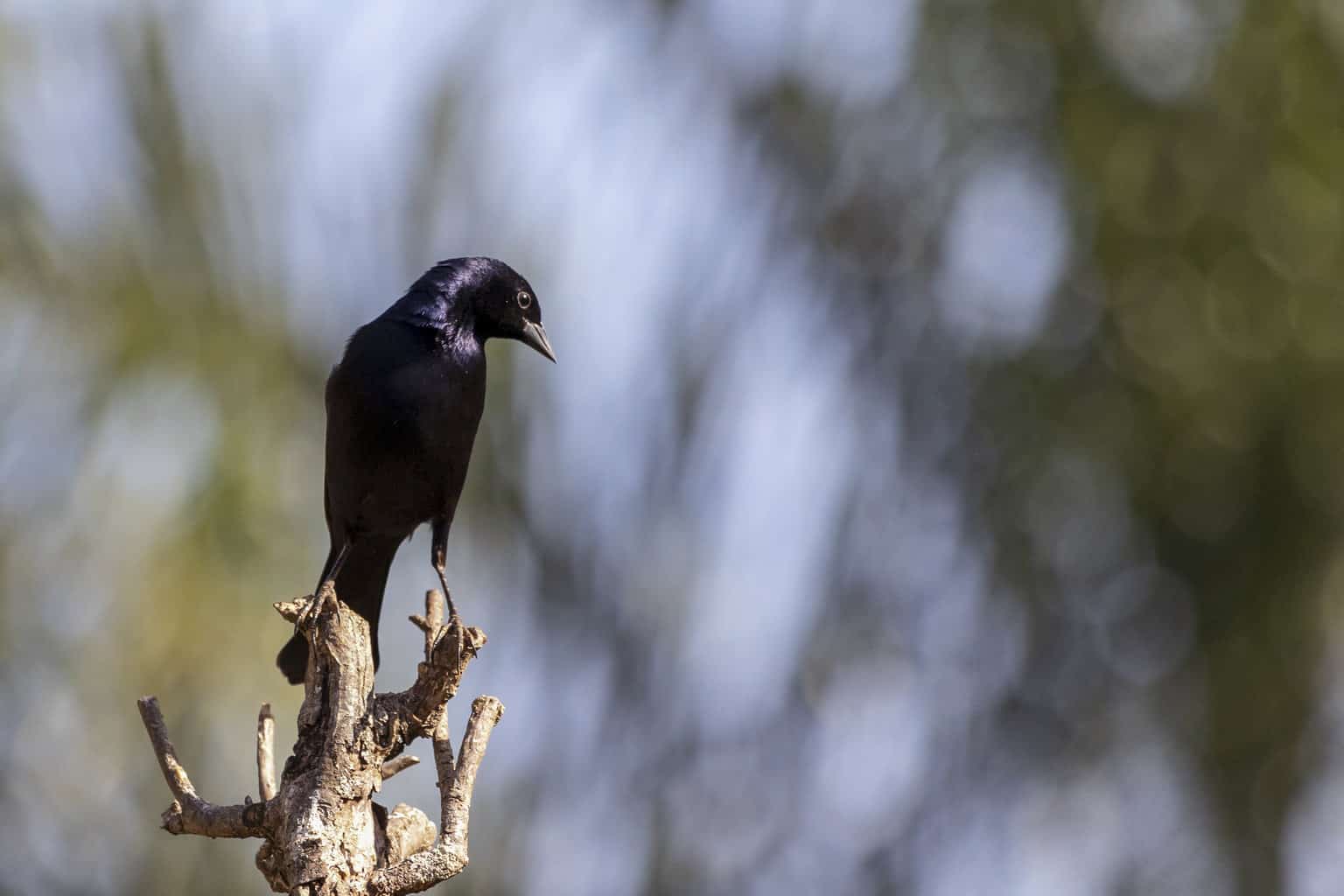
- Scientific Name: Corvus corax
- Length: 22.1-27.2 in (56-69 cm)
- Weight: 24.3-57.3 oz (689-1625 g)
- Wingspan: 45.7-46.5 in (116-118 cm)
Though not found in the East or on the Great Plains, common ravens are another common black bird in other parts of North America. They are large black birds with dark beaks and wedge-shaped tails.
Chihuahuan Ravens
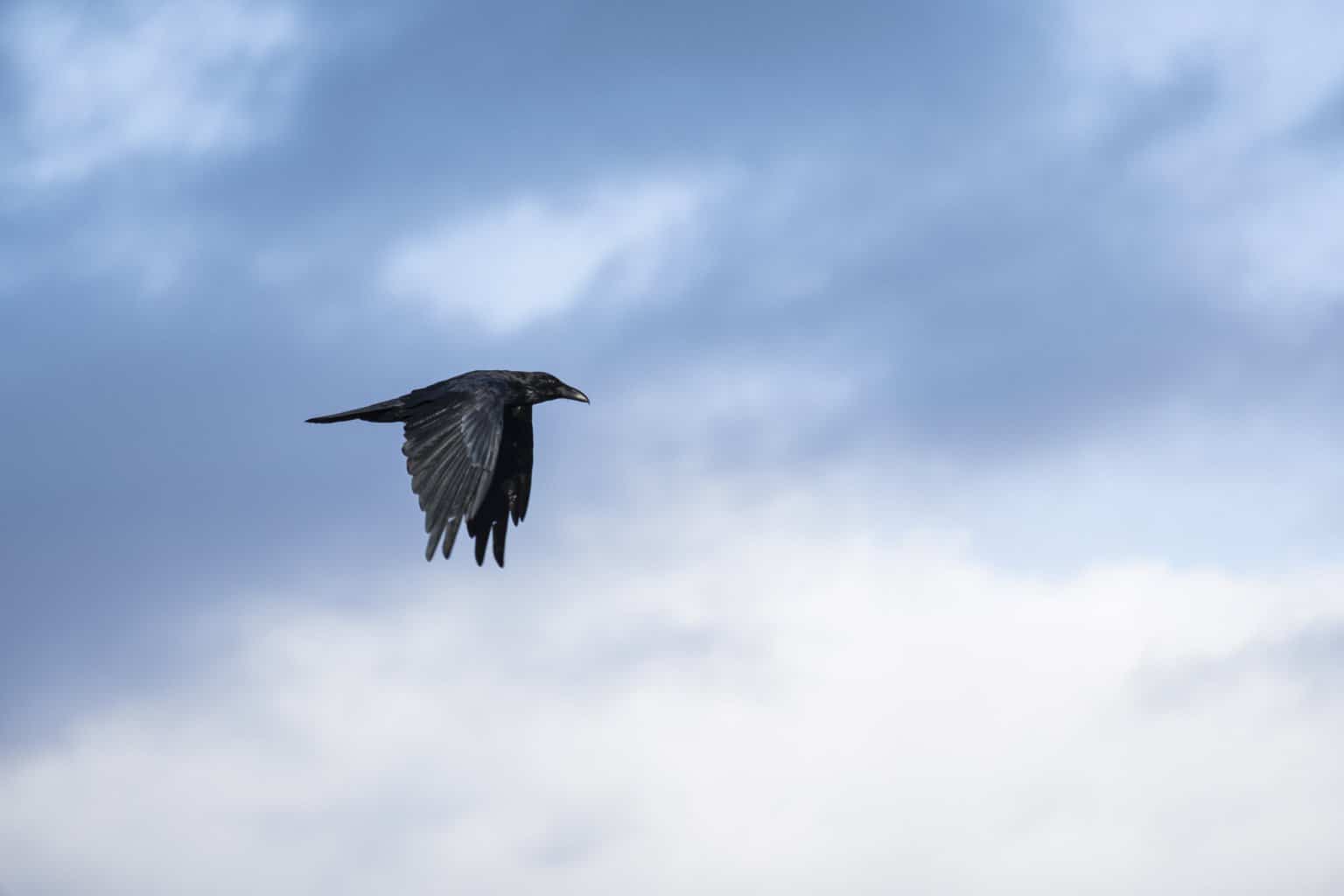
- Scientific Name: Corvus cryptoleucus
- Length: 18.1-20.9 in (46-53 cm)
- Weight: 15.6-23.5 oz (442-667 g)
- Wingspan: 40.9-43.3 in (104-110 cm)
Very similar in appearance to the common raven, this raven can be seen in the American Southwest as well as in Northern Mexico. They’re black from head to toe.
Black-billed Magpies
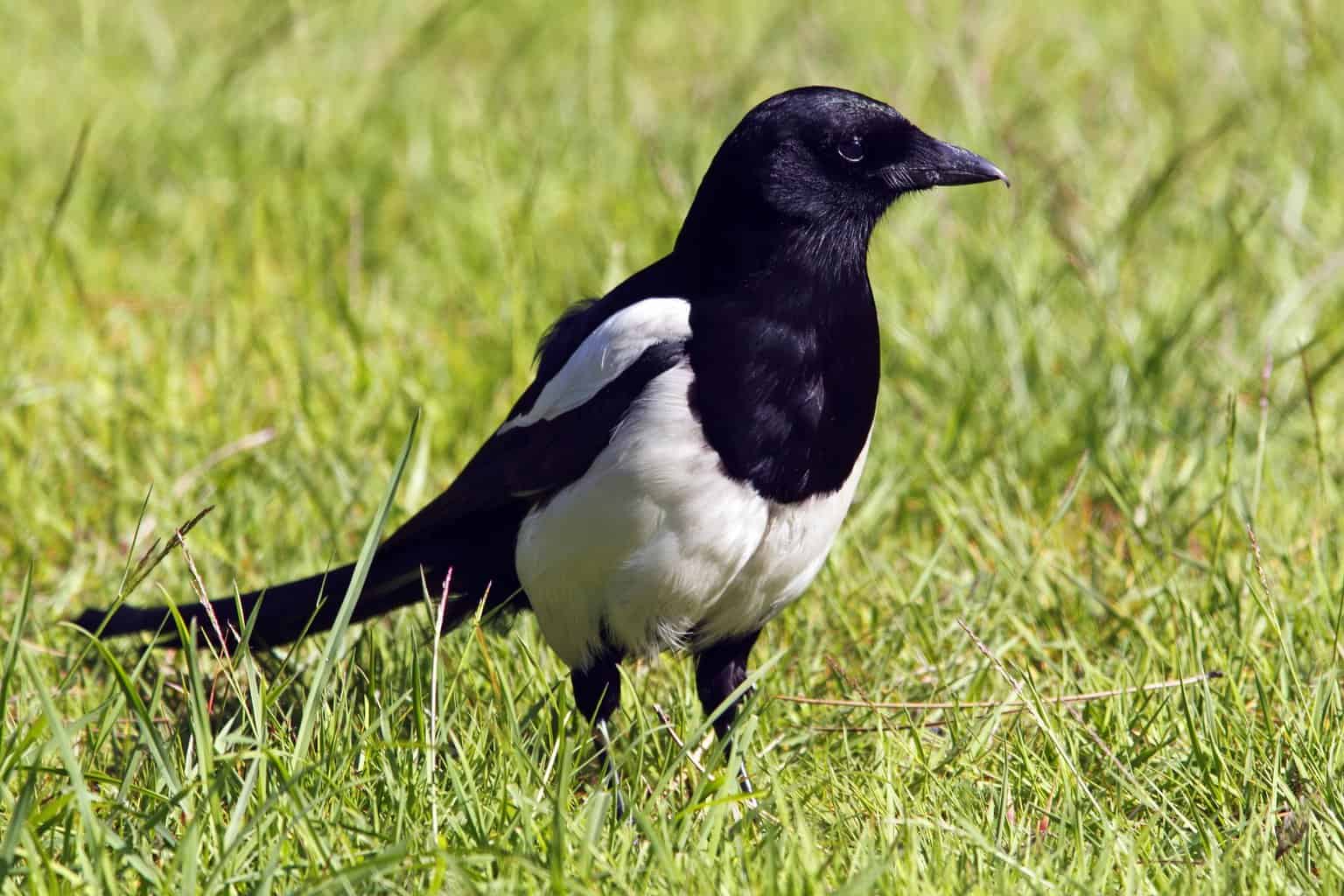
- Scientific Name: Pica hudsonia
- Length: 17.7-23.6 in (45-60 cm)
- Weight: 5.1-7.4 oz (145-210 g)
- Wingspan: 22.1-24.0 in (56-61 cm)
Magpies are also within the Corvidae bird family. Though they are mostly black, they also have a lot of white in their plumage, making them rather easy to identify.
Their long blue-black tails also help them stand out. They’re found in much of the western US and Canada — these unique birds will sometimes build nests out of twigs and animal hair.
Yellow-Billed Magpies

- Scientific Name: Pica nuttalli
- Length: 16.9-21.3 in (43-54 cm)
- Weight: 5.3-6.0 oz (150-170 g)
- Wingspan: 24.0 in (61 cm)
This other magpie lives only in California and it is on the watch list due to dangers to its population and its restricted range. Its yellow bill is the main factor that sets it apart — like the magpie above, it has black and white plumage.
Cuckoos: Cuculidae
Other black bird species include members of the Cuculidae bird family. Within this family, black birds include:
Groove-billed Ani

- Scientific name: Crotophaga sulcirostris
- Length: 13.5 in
- Weight: 3 oz
- Wingspan: 17 in
These black birds with large bills and a ruffled appearance are one member of the cuckoo bird family. They visit the Southwestern US, southern Texas, and the Gulf Coast during the summer.
Smooth-billed Ani

This glossy black bird with a large oversized bill lives mostly in South America. However, a small population can also be found in Florida (though they are increasingly rare and difficult to see).
Of course, the blackbirds of the New World — European starlings, corvids, and cuckoos — only represent a small fraction of the many birds with black plumage or partly black plumage.
Some other North American black birds within different families include:
- Ducks and other waterfowl (many of which have black or mostly black plumage) – the black scoter, for example, is one predominantly black bird found in watery environments. There are also the American moorhen, common gallinule, and examples such as the black rail within the Rallidae family.
- Seabirds such as the black oystercatcher, several cormorants and shags, and many auks, murres, and puffins typically have a lot of black in their plumage.
- Swifts – Apodidae – such as the black swift.
- New World vultures – the black vulture is a notable example of a large black bird. The Californian condor and turkey vulture also have a lot of black in their plumage.
- Birds of prey such as the common black hawk can be found in small parts of the Southwestern U.S.
- Several woodpeckers with predominantly black plumage, including the black-backed woodpecker.
- Phainopepla – such as phainopepla nitens. The males of this species are black with elegant crests and white wing patches. These can be seen in the Southwestern US.
- Lark buntings – among the New World sparrow species. The breeding males have velvet-black plumage with some white.
Of course, this is by no means an exhaustive list.
Identifying birds can’t be achieved by looking at their color alone or only watching the tops of trees. Learning about which black birds might be present in your area, then keeping a close eye on their other characteristics can help you get better at spotting them.
What Is the Largest Black Bird?
Ravens are larger than common crows and are often offered as an answer. But the largest mostly black bird in North America is usually said to be the Californian condor.
To get an idea of their size, check out this YouTube short from a wild animal presentation.
What Do Black Birds Symbolize?
In many cultures around the world, certain black birds carry significant cultural, symbolic, spiritual, or mythological connotations.
In some regions, specific black birds can be omens – both positive and negative. Sometimes black birds are considered messengers or psychopomps that pass between spiritual realms.

